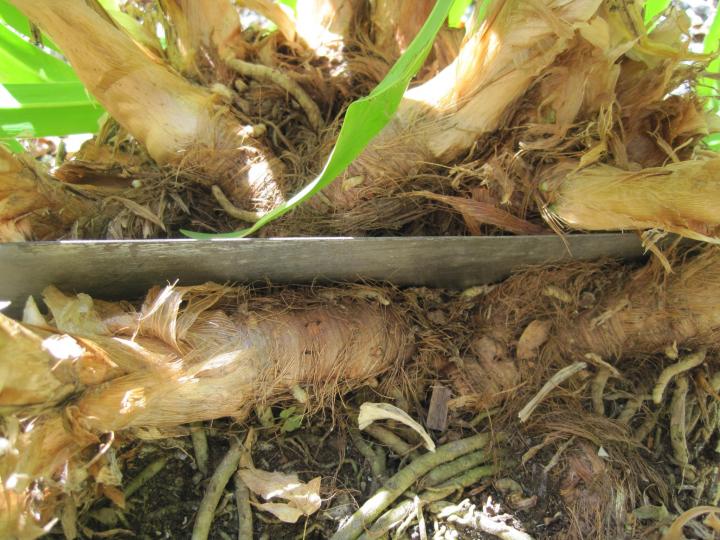Several years ago, I was given a potted agapanthus or African lily. After waiting all summer for my agapanthus to bloom, I had to finally admit that maybe it was time to repot it.
What is an Agapanthus?
Also called the Lily of the Nile, the agapanthus is actually native to South Africa—nowhere near the Nile.
There are seven species of agapanthus, which are in the same family as the amaryllis—another South African native. Most have similar strap-like leaves and the flowers consist of a large ball made up of small trumpet-like florets, each one like a tiny amaryllis. Some, like mine, are evergreen while other are deciduous, their leaves dying off in winter. The deciduous ones are the hardiest.

Growing Agapanthus
In areas of the country with mild winters, agapanthus are hardy enough to be grown outside. Here in the frozen north we have to grow them in containers and bring them inside to winter over, putting them back outside in the spring after danger of frost has past.
- Whether grown in the ground or in a container, agapanthus bloom best in full sun.
- Mine is bright blue but they come in many shades of blue and purple and there are some white ones too.
- The plants are about 2 feet tall but the flower stalks rise up above the foliage, growing to be a striking 3-4 feet high.
- There are also dwarf hybrids like ‘Peter Pan’ which grows to be only one foot tall. The flower has two-tone blossoms striped with pale and darker blue. ‘Tinkerbelle’ is another shorty with light blue flowers and green and white variegated foliage.
Repotting Agapanthus for Bloom
After waiting all summer for my agapanthus to bloom I had to finally admit that maybe it was time to repot it.

I heard they liked to be potbound but this one was extremely cramped. They should be split and repotted every 4-6 years to keep them blooming well and mine was way overdue. Even though the experts recommend repotting in the spring I knew it was now or never. The best time for me to do any garden chore is when I have the time.

Needless to say it put up quite a fight so I had to call on Tom to provide the muscle necessary to get it out of the pot.

There was no delicate way to divide this mess so I brought out the trusty hand saw and cut it up into several pieces. One of my gardening friends has an electric carving knife that has never seen a turkey—it is used only for dividing plants! I suppose a reciprocating saw could do the job too.

The pieces are cozy in their new pots. They will overwinter in our greenhouse where it can get down to 40 degrees on cold nights. This will give them a chance to rest and be ready for spring. It will probably be another year or two before they start to blossom again but it will be worth the wait!
See all our growing guides.
